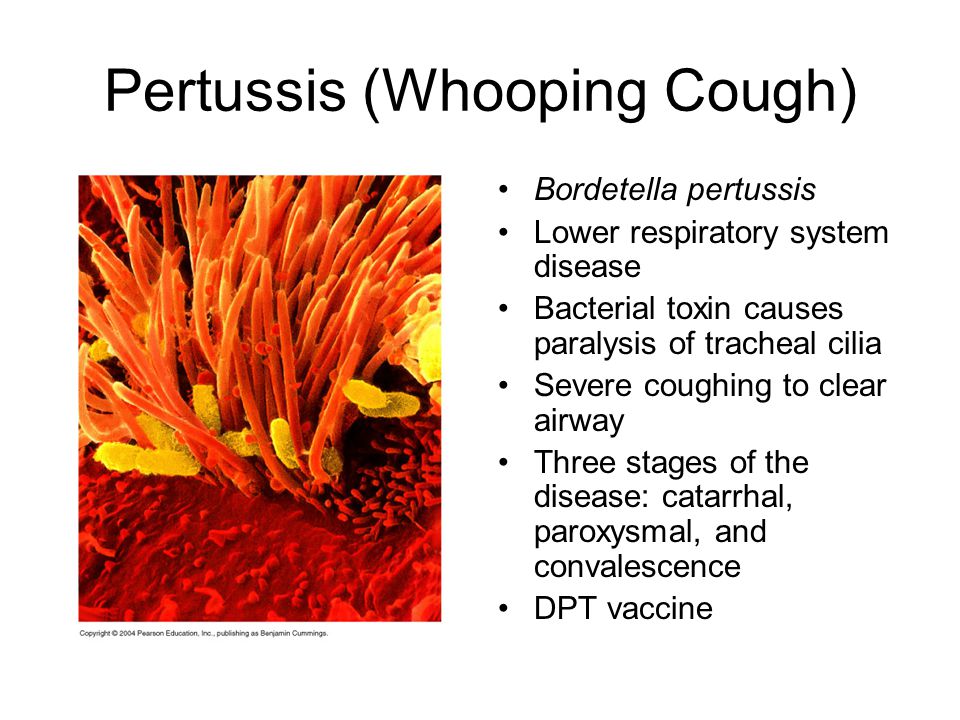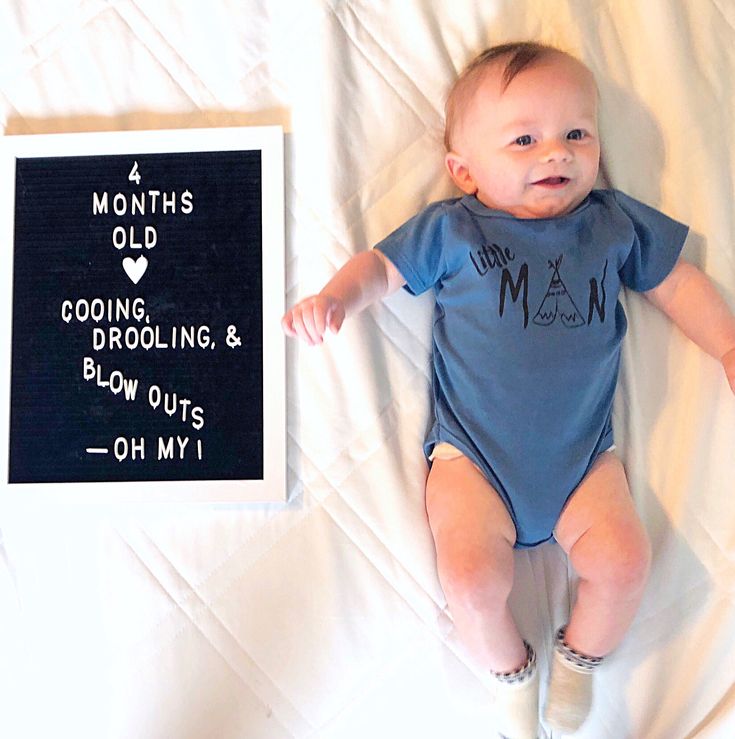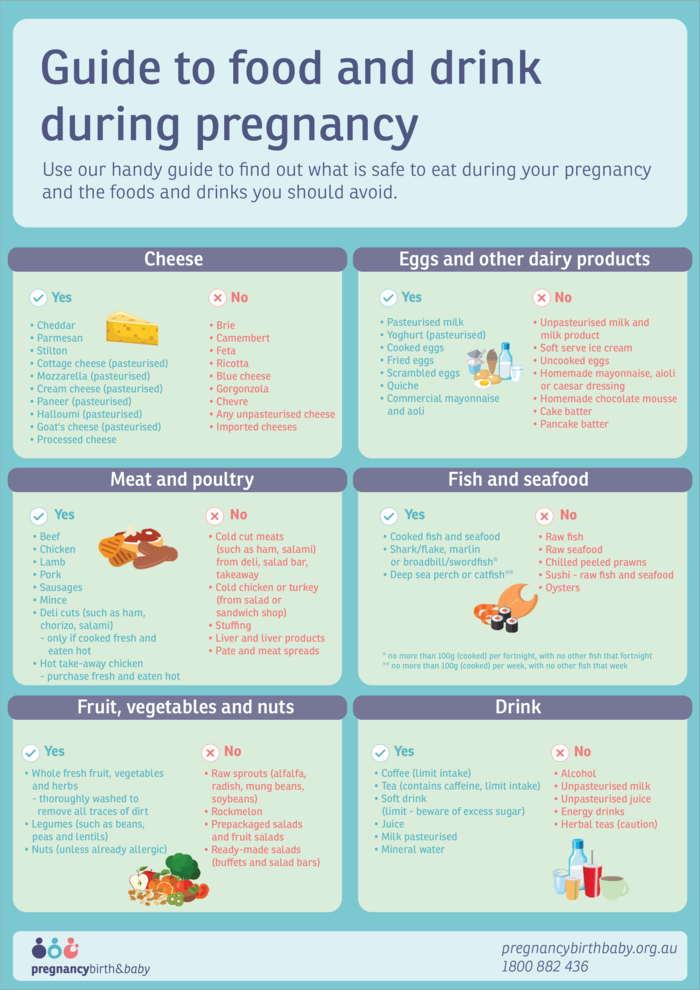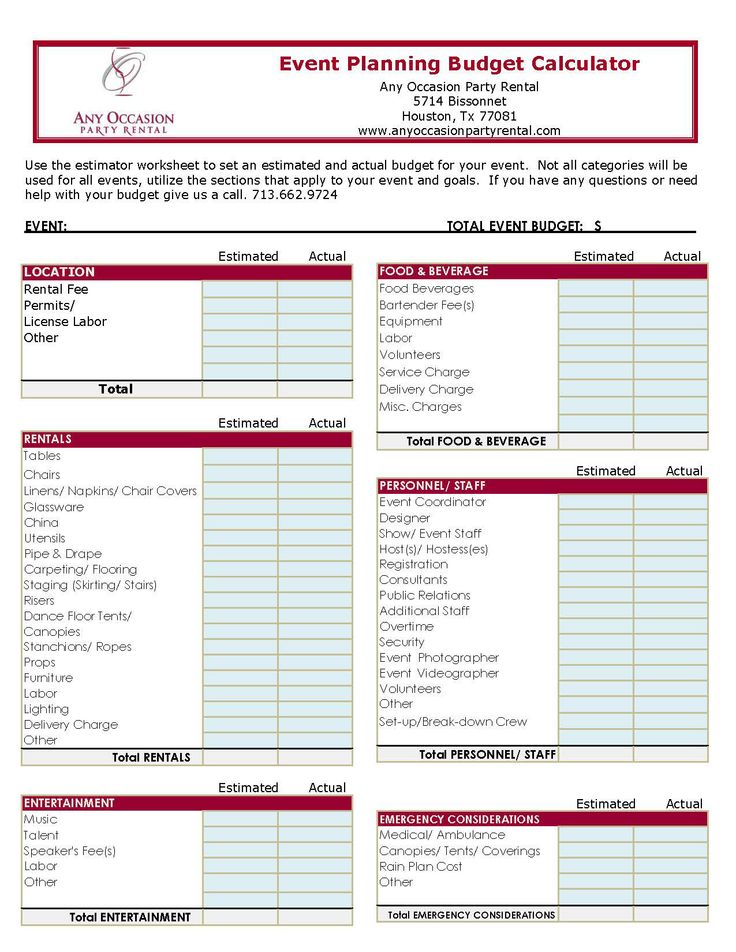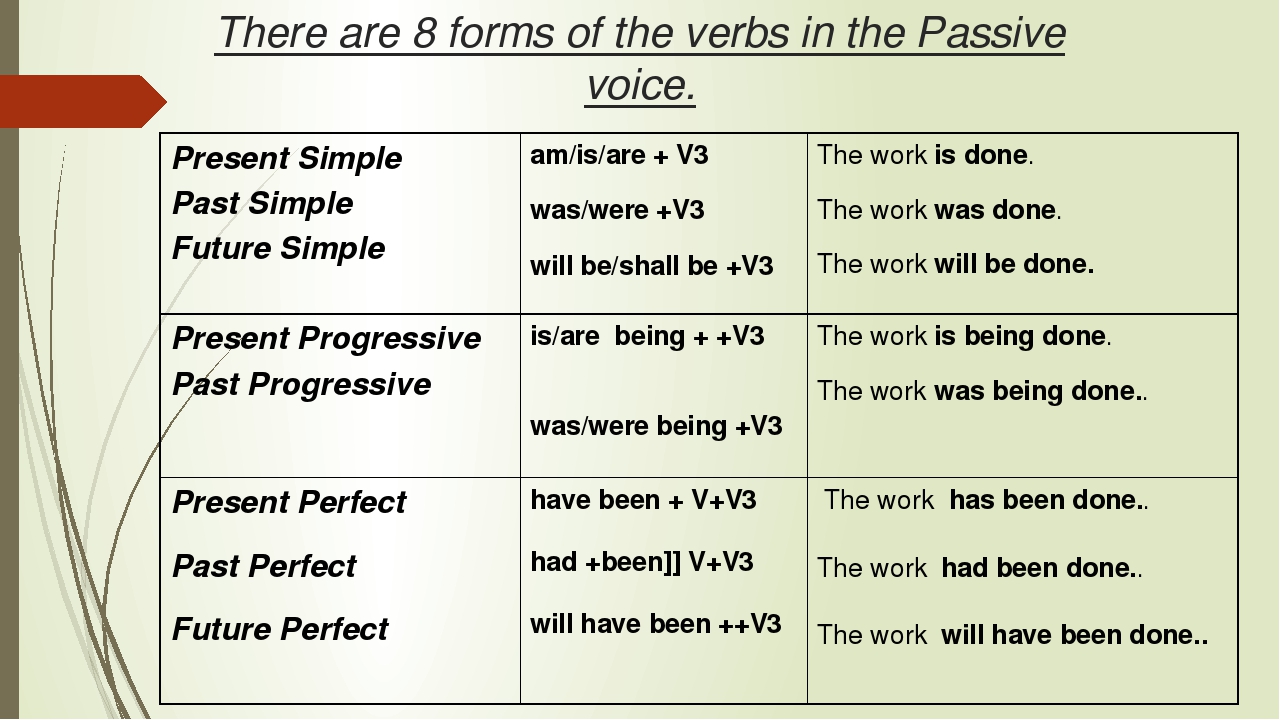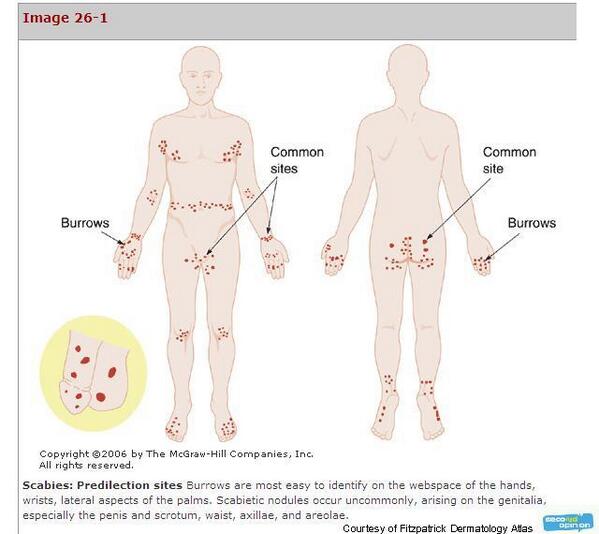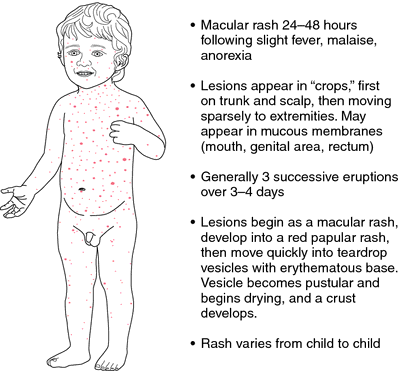How pertussis spreads
Pertussis: What Parents Need to Know
Facts on pertussis for parents of children in child care, school and other activities.
Download PDF version formatted for print: Pertussis: What Parents Need to Know (PDF)
- Pertussis: What Parents Need to Know in Hmong (PDF)
- Pertussis: What Parents Need to Know in Russian (PDF)
- Pertussis: What Parents Need to Know in Somali (PDF)
- Pertussis: What Parents Need to Know in Spanish (PDF)
On this page:
What is pertussis?
What are the symptoms of pertussis?
How is pertussis spread?
When and for how long can a person spread pertussis?
How can pertussis be prevented?
Is there a lab test for pertussis?
How long should someone with pertussis stay home from school or work?
More tips
What is pertussis?
Pertussis, or whooping cough, is a persistent cough illness. Anyone of any age can get pertussis.
What are the symptoms of pertussis?
The first symptoms of pertussis are similar to a cold. After a week or two, the cough worsens and may occur in sudden, uncontrollable bursts. Sometimes coughing will lead to vomiting or a high-pitched whoop sound when breathing in. Persons with pertussis may seem well between coughing spells. These spells become less frequent over time, but may continue for several weeks or months until the lungs heal.
How is pertussis spread?
Pertussis bacteria are spread through droplets produced during coughing or sneezing. These droplets don't travel very far through the air and usually only infect persons nearby.
When and for how long can a person spread pertussis?
Persons with pertussis can spread it to others for the first 3 weeks of coughing or until they complete 5 days of antibiotic treatment, whichever occurs first.
How can pertussis be prevented?
Vaccination is the best way to prevent pertussis. Vaccination against pertussis is part of the regularly recommended childhood vaccines. A pertussis vaccine booster is also recommended for adolescents and adults.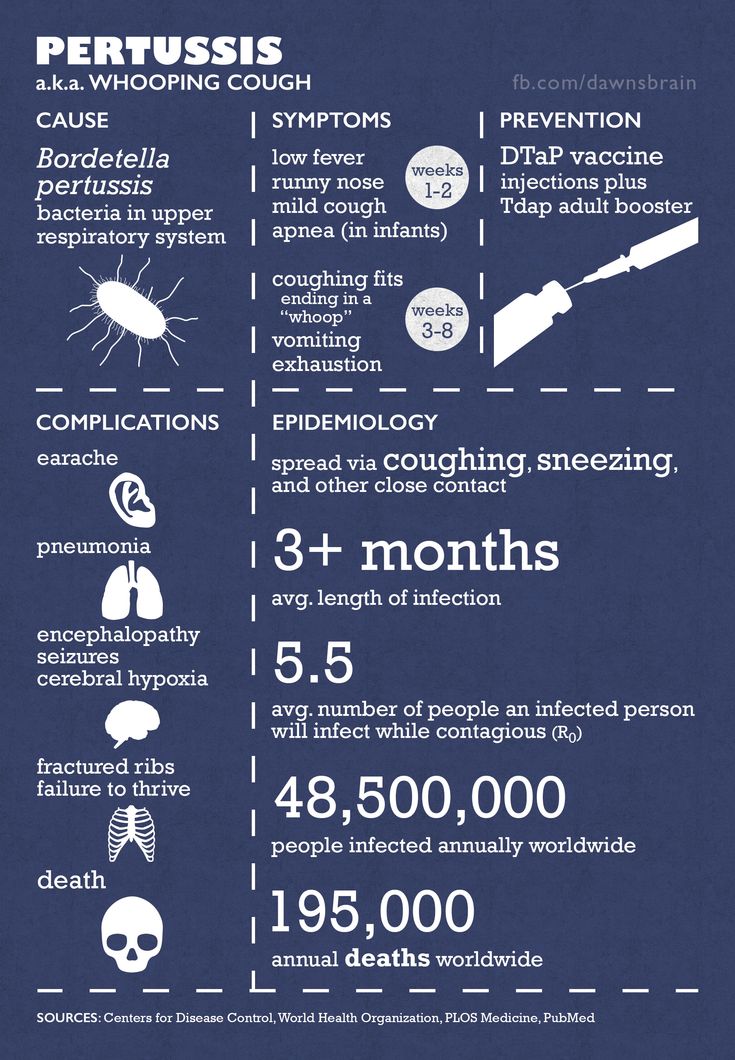 Ask your health care provider for more information.
Ask your health care provider for more information.
Persons who have been vaccinated for pertussis may still get pertussis disease, but will generally have a milder illness.
Antibiotics are sometimes recommended to prevent pertussis in close contacts of someone with pertussis, such as household members.
Is there a lab test for pertussis?
Yes, but only if someone has symptoms. Most commonly, the nasal passage is swabbed and the swab is examined for the presence of pertussis bacteria. Sometimes a test using blood will be done to look for an immune response.
How long should someone with pertussis stay home from child care, school, work, etc.?
Persons with pertussis should stay home from child care, school, work, and other activities until they have finished 5 days of antibiotics, unless they have already been coughing for 3 or more weeks.
More tips
- Wash your hands often.
- Stay at home if you are ill.
- When coughing, cover your mouth with a tissue or cough into your sleeve.
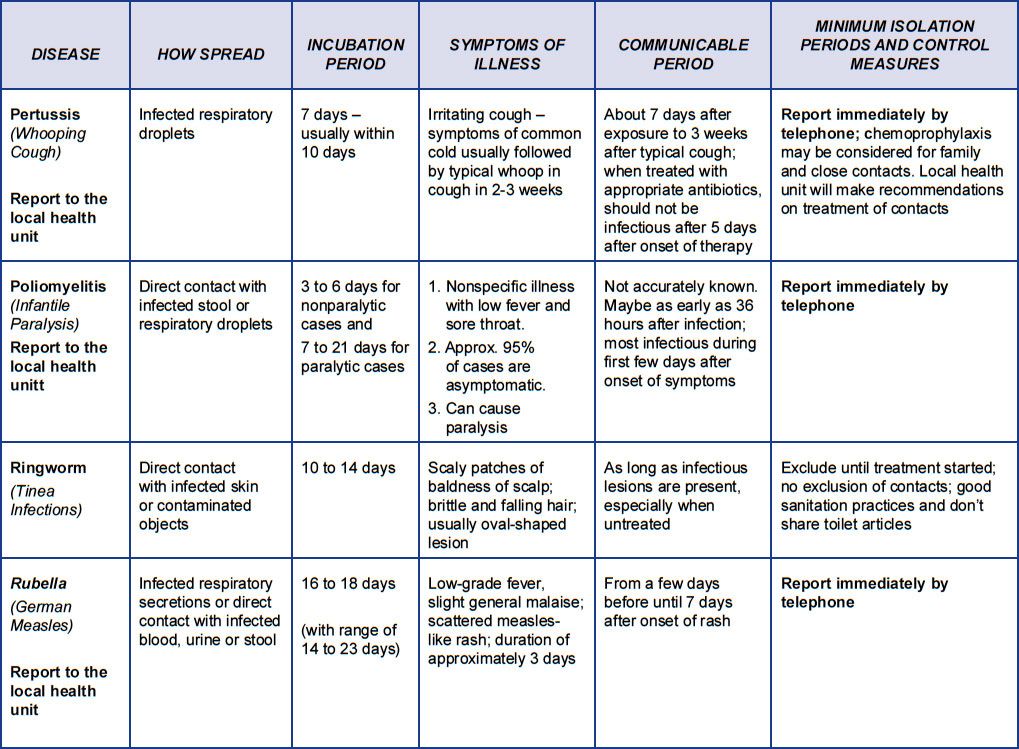
Whooping Cough | Pertussis | Whooping Cough Symptoms
On this page
Basics
- Summary
- Start Here
- Symptoms
- Diagnosis and Tests
- Prevention and Risk Factors
- Treatments and Therapies
Learn More
- Related Issues
See, Play and Learn
- Images
Research
- Statistics and Research
- Clinical Trials
- Journal Articles
Resources
- Find an Expert
For You
- Children
- Patient Handouts
What is whooping cough?
Whooping cough, or pertussis, is a respiratory infection that can cause coughing fits.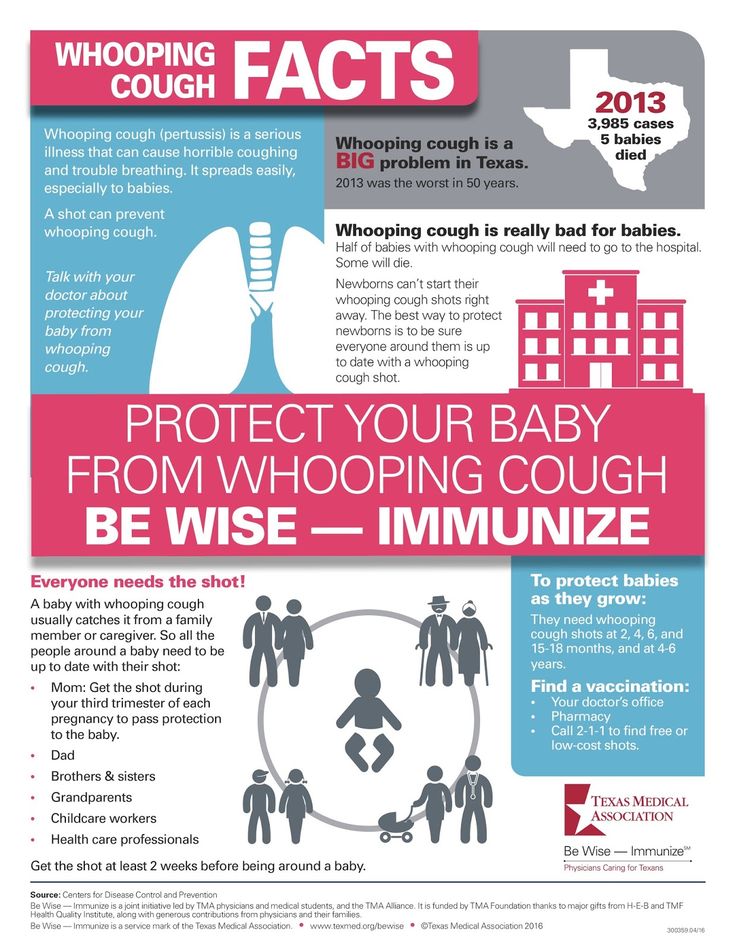 In serious cases, the coughing can become violent and rapid. You may cough so hard that you vomit. The name of the disease comes from the whooping noise you might make when you try to breathe in after coughing.
In serious cases, the coughing can become violent and rapid. You may cough so hard that you vomit. The name of the disease comes from the whooping noise you might make when you try to breathe in after coughing.
Whooping cough is very contagious and can affect anyone. But it can be especially serious in babies who did not yet get the vaccine. About half of babies under age one who get whooping cough need care in the hospital.
What causes whooping cough?
Whooping cough is caused by a type of bacteria called Bordetella pertussis. It spreads from person to person. People who have pertussis usually spread it through coughing, sneezing, or breathing very close to someone. It can also sometimes be spread by touching an infected surface and then touching your nose or mouth.
If you get pertussis, you are contagious for about 2 weeks after you start coughing. Antibiotics may shorten the time that you are contagious.
What are the symptoms of whooping cough?
The symptoms of pertussis usually start within 5 to 10 days after you are exposed. But sometimes you may not get symptoms until up to 3 weeks later.
But sometimes you may not get symptoms until up to 3 weeks later.
Whooping cough usually starts with cold-like symptoms. They may last for 1 to 2 weeks and can include:
- Runny nose
- Mild fever
- Mild, occasional cough
The early symptoms in babies can be different. They may only cough a little bit, or they may not cough at all. Babies may have apnea, which means that there is a pause in breathing. They may start to turn blue. If this happens, get medical care for your baby right away.
As whopping cough gets worse, the symptoms may include:
- Fits of many, rapid coughs followed by a high-pitched "whoop" sound
- Vomiting during or after coughing fits
- Exhaustion after coughing fits
The coughing fits get worse and start happening more often, especially at night. You may have them for up to 10 weeks or more.
Recovery from this can happen slowly. Your cough gets milder and happens less often. The coughing fits can come back if you have another respiratory infection, even months after you first got whooping cough.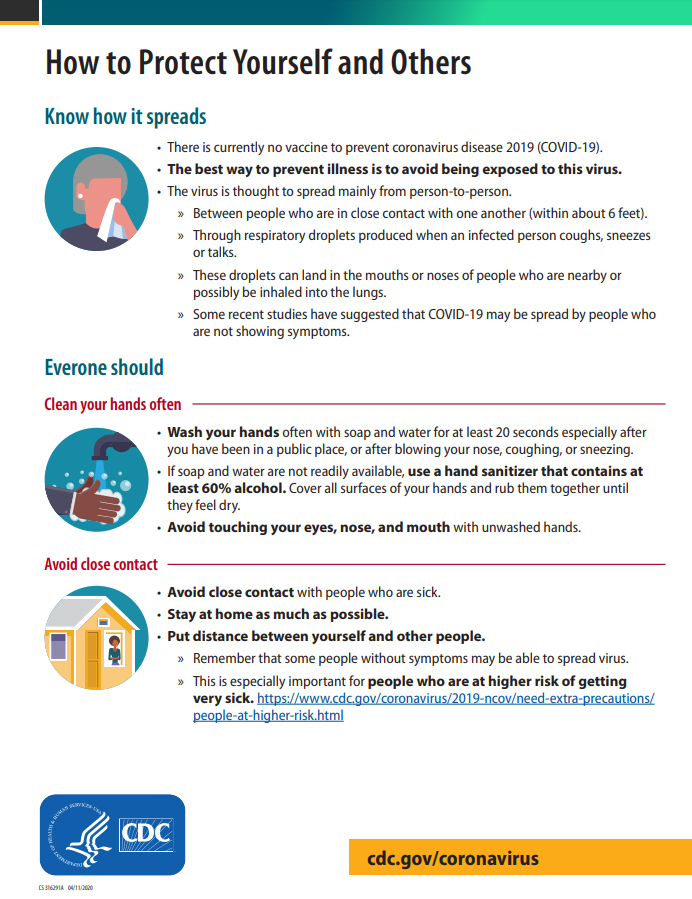
How is whooping cough diagnosed?
Your health care provider may use many tools to diagnose whooping cough:
- A medical history, which includes asking about your symptoms
- A physical exam
- A lab test which involves taking a sample of mucus from the back of the throat through the nose. This may be done with a swab or syringe filled with saline. The sample is tested for the bacteria that causes whooping cough.
- Blood test
- Chest x-ray
What are the treatments for whooping cough?
The treatment for whooping cough is usually antibiotics. Early treatment is very important. It may make your infection less serious and can also help prevent spreading the disease to others.
Treatment after you have been sick for 3 weeks or longer may not help. The bacteria are gone from your body by then, even though you usually still have symptoms. This is because the bacteria have already done damage to your body.
Whooping cough can sometimes be very serious and require treatment in the hospital.
Can whooping cough be prevented?
Vaccines are the best way to prevent whooping cough. There are two vaccines in the United States that can help prevent whooping cough: DTaP and Tdap. These vaccines also provide protection against tetanus and diphtheria.
Babies and other people at high risk serious disease should be kept away from people who have whooping cough.
Sometimes health care providers give antibiotics to family members of people who have had whooping cough or people who have been exposed to it. The antibiotics may prevent them from getting the disease.
You may also help prevent the spread of whooping cough (and other respiratory diseases) by:
- Washing your hands often with soap and water. You can use an alcohol-based hand rub if soap and water are not available.
- Avoiding touching your face with unwashed hands
- Cleaning and disinfecting surfaces that you frequently touch, including toys
- Covering coughs and sneezes with a tissue or upper shirt sleeve, not hands
- Staying home when sick
- Avoiding close contact with people who are sick
Centers for Disease Control and Prevention
- Pertussis (Whooping Cough) (Centers for Disease Control and Prevention)
- Pertussis Frequently Asked Questions (Centers for Disease Control and Prevention) Also in Spanish
- Whooping Cough (American Academy of Family Physicians) Also in Spanish
- Whooping Cough (Pertussis) (Nemours Foundation) Also in Spanish
- Pertussis Signs & Symptoms (Centers for Disease Control and Prevention) Also in Spanish
- Pertussis Diagnosis & Treatment (Centers for Disease Control and Prevention) Also in Spanish
- Pertussis (Whooping Cough) Complications (Centers for Disease Control and Prevention) Also in Spanish
- Photos of Pertussis (Centers for Disease Control and Prevention) Also in Spanish
- Pertussis (Whooping Cough) Outbreaks (Centers for Disease Control and Prevention) Also in Spanish
- ClinicalTrials.
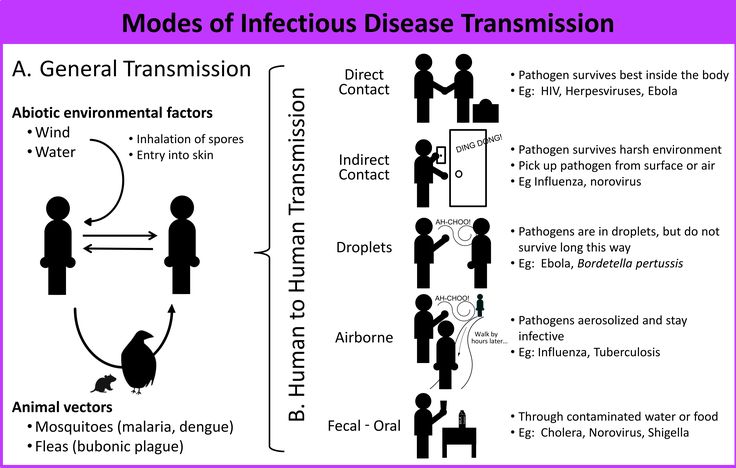 gov: Whooping Cough (National Institutes of Health)
gov: Whooping Cough (National Institutes of Health)
- Article: Seroepidemiology of pertussis in the east of China: Estimates of incidence.
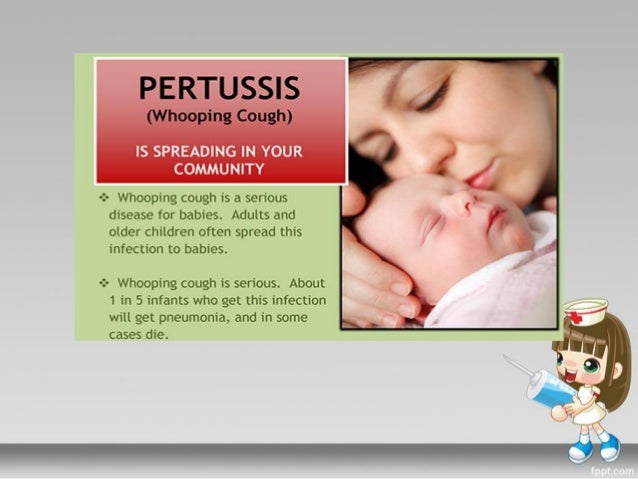 ..
.. - Article: Impact of national COVID-19 restrictions on incidence of notifiable communicable diseases...
- Article: Intention and Attitude to Accept a Pertussis Cocooning Vaccination among Chinese.
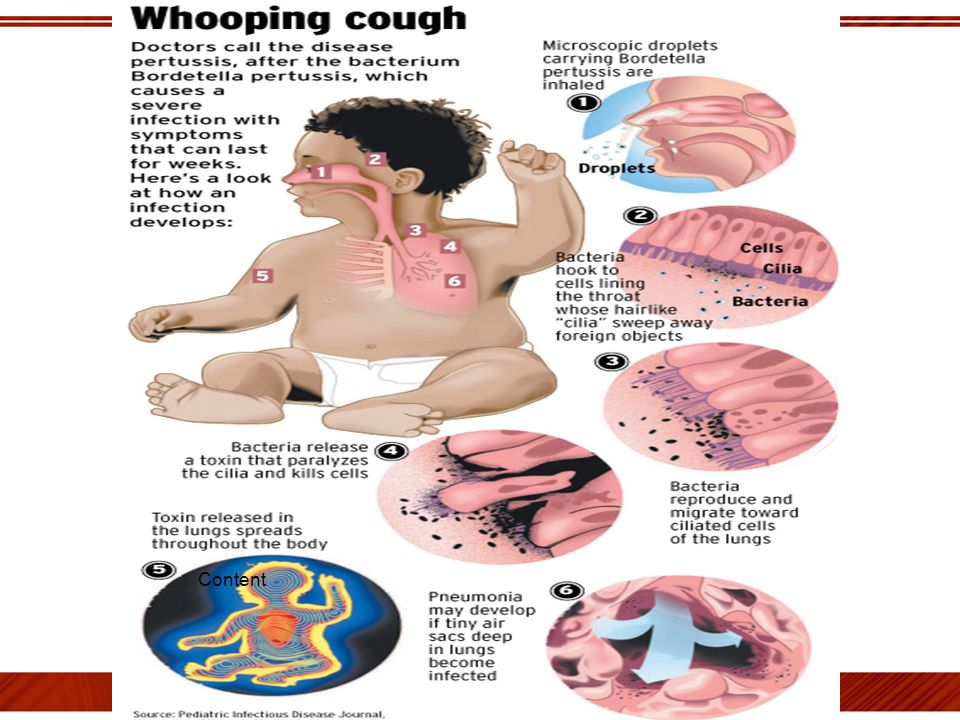 ..
.. - Whooping Cough -- see more articles
- Centers for Disease Control and Prevention Also in Spanish
- National Institute of Allergy and Infectious Diseases
- Protecting Babies from Whooping Cough (Centers for Disease Control and Prevention) Also in Spanish
- Whooping Cough (Pertussis) - Fact Sheet for Parents (Centers for Disease Control and Prevention) Also in Spanish
Pertussis - NCCH
Whooping cough is one of the most common causes of cough in children and adults. A typical manifestation of whooping cough is a paroxysmal cough with a characteristic sound on inspiration. In babies of the first months of life, whooping cough can occur with respiratory arrest, which is very dangerous.
A typical manifestation of whooping cough is a paroxysmal cough with a characteristic sound on inspiration. In babies of the first months of life, whooping cough can occur with respiratory arrest, which is very dangerous.
How can a child get whooping cough?
Whooping cough is caused by the bacterium Bordetella pertussis. A child can become infected with whooping cough only from a sick person: the infection is transmitted by airborne droplets during sneezing, coughing, laughing. Because whooping cough in older children and adults is often mild, with only a slight cough, they may unknowingly pass the infection on to the child. If a family member has whooping cough, an unvaccinated child has about an 80% chance of getting sick. nine0007 The first symptoms of whooping cough on average appear after 7-10 days, sometimes even 21 days after infection. A sick person is contagious from the moment a runny nose appears until the fifth day of taking an antibiotic.
Can a child vaccinated against whooping cough get whooping cough?
The whooping cough component is included in many vaccines, eg DPT, Infanrix, Pentaxim. According to the calendar, pertussis vaccination is carried out at 3, 4½, 6 months and then revaccination at 1½ years. Vaccination quite reliably protects a child from whooping cough for several years, but after 3-5 years the level of protection drops. Therefore, whooping cough often occurs in children under 6 months of age who have not yet completed a full course of vaccination, and children over 6-7 years of age who received the last pertussis vaccine at the age of 1½ years. A child vaccinated against whooping cough usually gets the infection more easily than a child who has not received the vaccine. nine0003
According to the calendar, pertussis vaccination is carried out at 3, 4½, 6 months and then revaccination at 1½ years. Vaccination quite reliably protects a child from whooping cough for several years, but after 3-5 years the level of protection drops. Therefore, whooping cough often occurs in children under 6 months of age who have not yet completed a full course of vaccination, and children over 6-7 years of age who received the last pertussis vaccine at the age of 1½ years. A child vaccinated against whooping cough usually gets the infection more easily than a child who has not received the vaccine. nine0003
How does whooping cough progress?
Whooping cough usually develops within 1-3 weeks.
First, the child's body temperature rises slightly (subfebrile condition occurs), a slight runny nose and cough appear. After 1-2 weeks, the cough intensifies, the child begins to suffer from coughing fits that can last more than one minute, coughing fits may be accompanied by reddening of the face, shortness of breath, respiratory arrest, vomiting, and noisy breaths occur between coughing shocks, which are called reprises.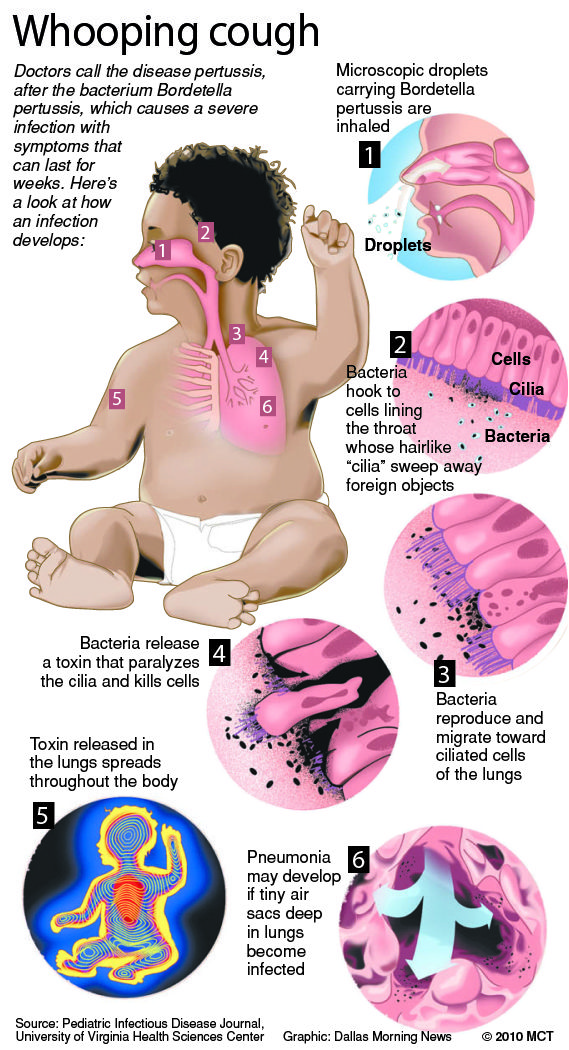 Between bouts of coughing, the child usually feels well. Against the background of whooping cough, a child may develop pneumonia, which will manifest itself as a new rise in body temperature and a deterioration in well-being. In children under one year of age, whooping cough is complicated by pneumonia in one in five cases. nine0007 The child begins to recover from whooping cough in 3-4 weeks, when the coughing fits with reprisals stop, but the cough can sometimes persist for another 1-3 months.
Between bouts of coughing, the child usually feels well. Against the background of whooping cough, a child may develop pneumonia, which will manifest itself as a new rise in body temperature and a deterioration in well-being. In children under one year of age, whooping cough is complicated by pneumonia in one in five cases. nine0007 The child begins to recover from whooping cough in 3-4 weeks, when the coughing fits with reprisals stop, but the cough can sometimes persist for another 1-3 months.
Babies in their first months of life can get whooping cough in a different way. Sometimes they don't have typical coughing fits. Instead of coughing or against its background, they may experience bouts of respiratory arrest (apnea).
Do not delay consulting a doctor if the child has coughing fits, cough to vomit, cough with reprisals, shortness of breath or apnea, or if the child is very lethargic. nine0003
How can I be sure my child has whooping cough?
Take your child to a doctor.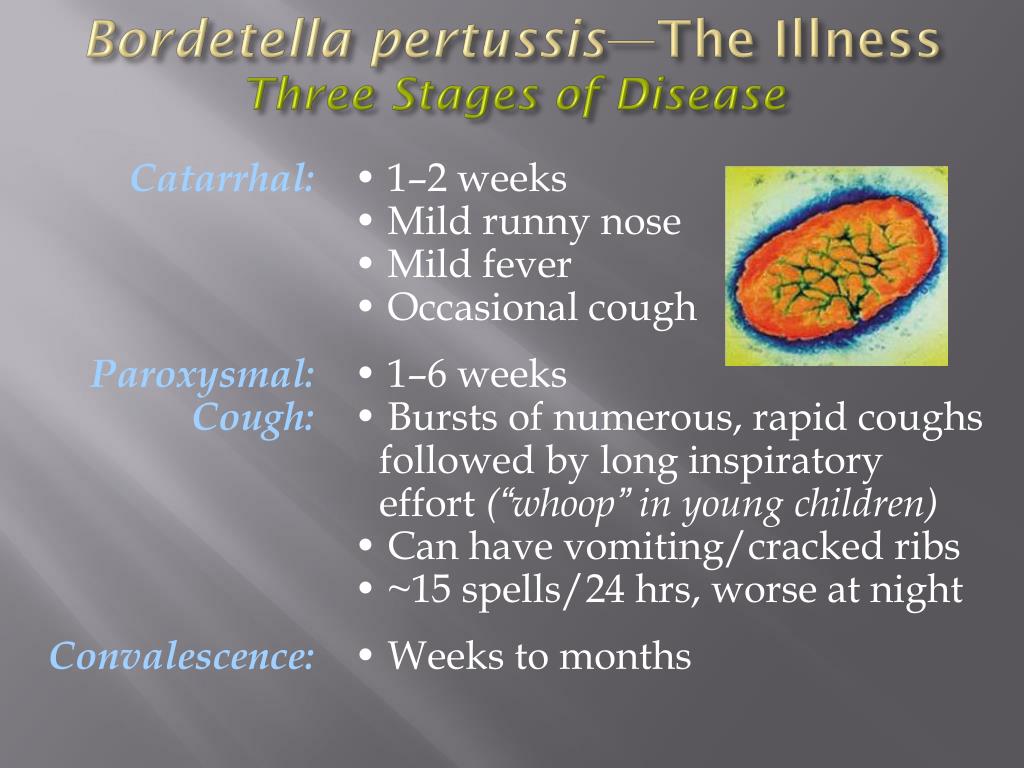 If whooping cough is suspected, the doctor will take blood tests for antibodies to the whooping cough pathogen and / or a nasopharyngeal swab for PCR for whooping cough. A chest x-ray may be needed.
If whooping cough is suspected, the doctor will take blood tests for antibodies to the whooping cough pathogen and / or a nasopharyngeal swab for PCR for whooping cough. A chest x-ray may be needed.
What is the treatment for whooping cough?
If whooping cough is diagnosed within the first month of illness, the doctor will give the child an antibiotic. Be sure to follow the antibiotic regimen recommended by your doctor. The antibiotic slightly shortens the duration of the disease and reduces the contagiousness (contagiousness) of the disease. Unfortunately, despite the timely antibiotic prescribed, the infection can proceed for quite a long time. nine0003
To relieve coughing spells, your doctor may prescribe inhalers and cough drops.
In order not to provoke vomiting, parents are advised to feed and water the child often and in small portions.
Tobacco smoke is a serious cause of coughing fits, so make sure your child is not exposed to secondhand smoke.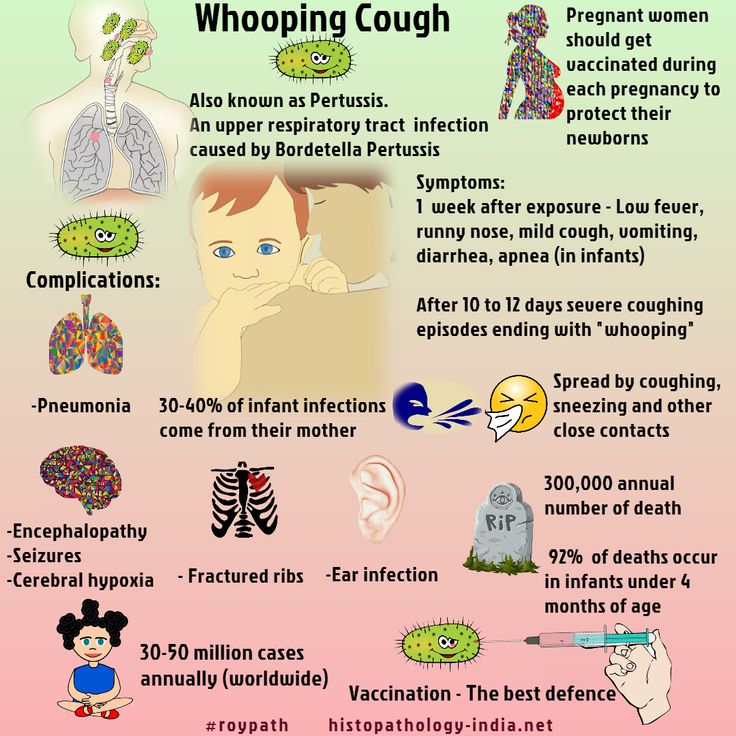
incubation period, consequences after illness. How is whooping cough transmitted?
What is the temperature during illness? nine0043
It is believed that body temperature is one of the clearest indicators of a person's state of health. Unlike some other acute infections, the temperature in whooping cough can range from normal to subfebrile, in rare cases reaching up to 38.5 ºС.
This is the main difficulty in diagnosing the disease. Since the clinical picture resembles a common cold, patients are reluctant to turn to specialists. Many people prefer to self-medicate. Doctors strongly recommend paying attention to coughing in the absence of fever. Seeking help early can prevent serious complications from whooping cough. nine0003
Complications after whooping cough
Whooping cough, like many infectious diseases, is dangerous due to its complications. Complications are by nature very insidious and unpredictable. It seems that the disease has already been defeated, but problems appear, fraught with consequences. It happens that complications are asymptomatic, but they still weaken an already depleted body.
It happens that complications are asymptomatic, but they still weaken an already depleted body.
The same often happens with whooping cough. Complications after the disease are most often associated with pertussis infection or secondary flora. It can be:
- Pneumopertussis;
- Pulmonary atelectasis;
- Bronchitis;
- Pneumonia;
- False croup;
- Damage to the cardiovascular system;
- Encephalopathy.
In addition to those listed above, other complications may occur. Due to the tension of the abdominal muscles during coughing, intra-abdominal pressure increases, which leads to the formation of hernias and prolapse of the rectal mucosa. nine0003
Cases have been reported of severe coughing resulting in broken ribs and damage to the eardrum. Another bacterial infection can join whooping cough, and, as a result, inflammatory processes in the middle ear, otitis media, may occur.
For young children, the most terrible thing during a coughing fit can be a violation of the rhythm of breathing until it stops.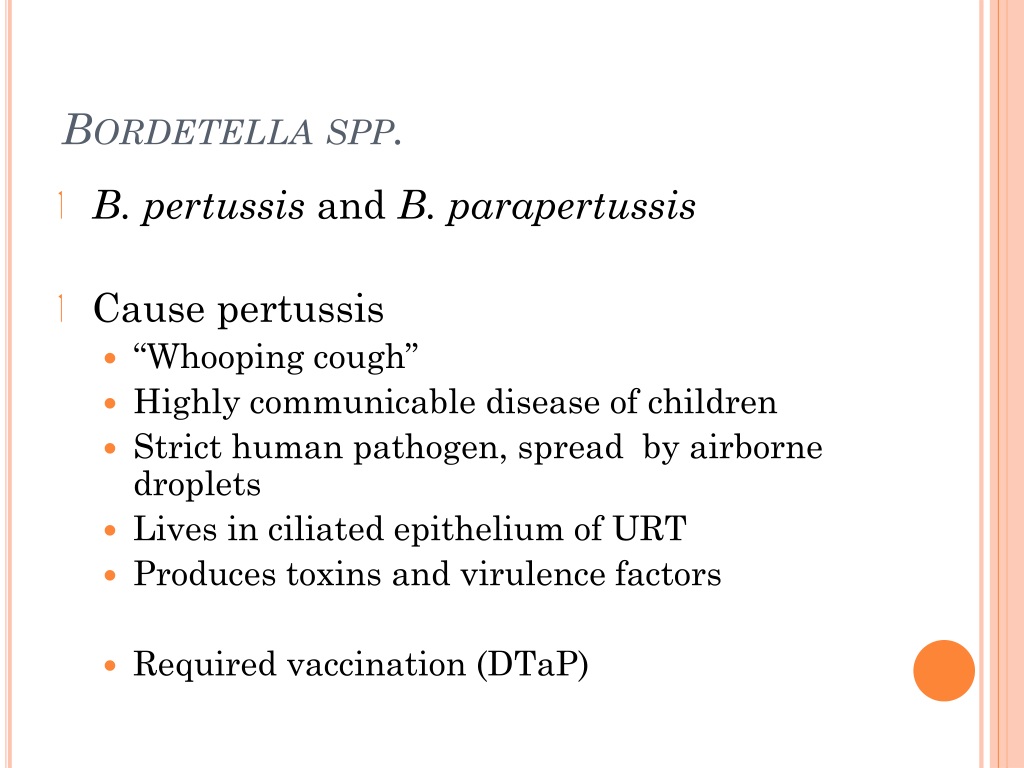 This and convulsions as the cause of brain damage can lead to tragic consequences. Complications after whooping cough indicate that this is a rather serious disease. nine0003
This and convulsions as the cause of brain damage can lead to tragic consequences. Complications after whooping cough indicate that this is a rather serious disease. nine0003
Whooping cough: consequences after illness
With timely detection of infection and properly selected therapy, the consequences of whooping cough have little effect on a person's later life. However, they should not be taken lightly. In some young patients, as a consequence of the severe course of the disease, the following were noted:
- Delays in psychomotor development;
- Speech disorders;
- Hearing loss.
If you do not listen to the recommendations of specialists and do not adhere to all the prescriptions of doctors, you can get a tendency to various diseases of various etiologies. It can be:
- Sinusitis;
- Pharyngitis;
- Tonsillitis;
- Laryngitis;
- Tracheitis and others.
Neuroses, convulsive syndromes and even partial or complete paralysis are described among the residual effects after suffering whooping cough in medicine.